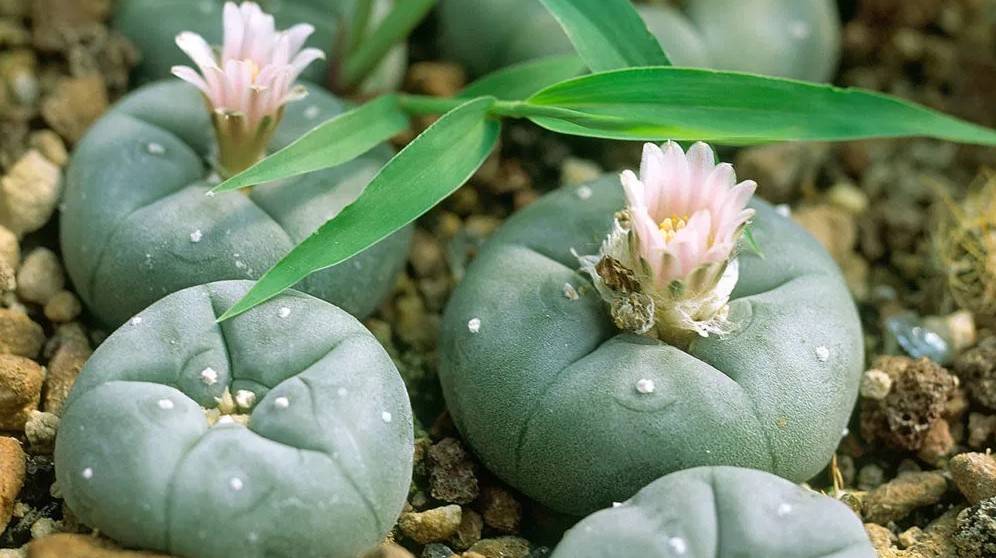-
×
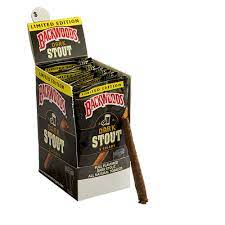 Dark Stout Backwoods Cigars
2 × $130.00
Dark Stout Backwoods Cigars
2 × $130.00 -
×
 Banana Backwoods Cigars
2 × $200.00
Banana Backwoods Cigars
2 × $200.00 -
×
 Russian Cream Backwoods Cigars Pack
2 × $20.00
Russian Cream Backwoods Cigars Pack
2 × $20.00 -
×
 Bong *Includes 2 Tips*
1 × $50.00
Bong *Includes 2 Tips*
1 × $50.00 -
×
 Backwoods Honey Bourbon Cigars Pack
1 × $20.00
Backwoods Honey Bourbon Cigars Pack
1 × $20.00 -
×
 Backwoods Dark Stout Cigars
3 × $20.00
Backwoods Dark Stout Cigars
3 × $20.00 -
×
 NFT
1 × $0.01
NFT
1 × $0.01 -
×
 Full Spectrum CBD 1500mg
1 × $60.00
Full Spectrum CBD 1500mg
1 × $60.00 -
×
 Banana Backwoods Cigars Pack
1 × $25.00
Banana Backwoods Cigars Pack
1 × $25.00 -
×
 Organic CBD/CBN Sleep Well
1 × $75.00
Organic CBD/CBN Sleep Well
1 × $75.00 -
×
 Vanilla Backwoods Carton Cigars
1 × $200.00
Vanilla Backwoods Carton Cigars
1 × $200.00 -
×
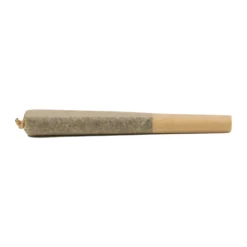 1G Pre Rolls - Single
1 × $5.00
1G Pre Rolls - Single
1 × $5.00 -
×
 Vanilla Backwood 5 Pack Cigars
4 × $25.00
Vanilla Backwood 5 Pack Cigars
4 × $25.00 -
×
 Cognac XO Backwoods Cigars Pack
5 × $25.00
Cognac XO Backwoods Cigars Pack
5 × $25.00
Cannabis Wiki
What Is Peyote?
For years, peyote has been part of popular culture. The Doors, a famous band named after the same name, is one of the most well-known instances. Peyote has become an entrenched component of a developing counterculture that cherishes freedom of speech. Many people are unaware, however, many individuals are familiar with peyote due to its inclusion in movies and music. Buy our MYSTERY OZ.
What exactly is peyote, how does it function, and what are the side effects? Here’s a comprehensive explanation.
A Short History of Peyote
Peyote is a psychoactive cactus native to Mexico’s arid regions, particularly Chihuahua, Coahuila, Nuevo León, and Tamaulipas. Lophophora williamsii is the botanical name of peyote. Its usual name, however, comes from the Aztec term “Peyotl,” which means “shining” or “glistening.” The Spanish term for it is “peyote.”
It’s a tiny, bulbous plant with mescaline present in the bulbs. It boasts a powerful and pungent flavor that prevents it from being eaten by predators.
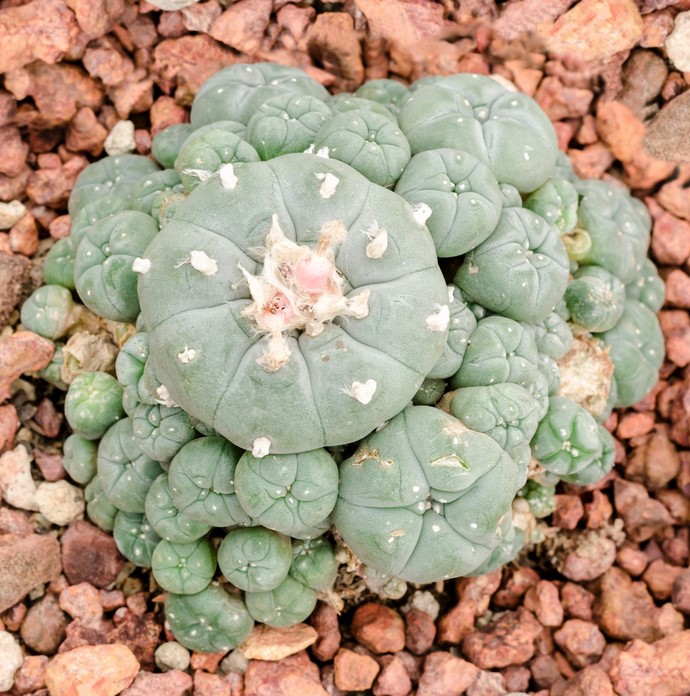
Peyote has been used in religious ceremonies by Mesoamerican civilizations such as the Aztecs. Archeologists believe it was used at least 5000 years ago.
Typically, shamans or priests employed peyote to induce a altered state of consciousness in order to communicate with godly spirits or forces. It’s also been used in Native American religious rituals for a long time.
Is Peyote Legal?
The Controlled Substances Act, which is still in force today, classifies peyote as a Schedule I narcotic. As a result, the DEA considers it to have a large potential for abuse and no established medical usage. Some jurisdictions, on the other hand, have decriminalized the use of peyote while simultaneously decriminalizing various other psychedelic chemicals.
The Native American Church may use peyote lawfully within its confines, according to the American Indian Religious Freedom Act of 1978, which makes it illegal in most states. Even non-Native Americans might be able to use it lawfully as part of a genuine peyote ceremony.
However, before doing anything else, individuals must thoroughly study the relevant laws in their region. It’s also important to note that peyote is a critically endangered species. As a result, people should not take plants from the wild that they discover.
Peyote Effects
Users of peyote report mystical, spiritual, and intensely psychedelic experiences.
On ingestion, cannabis can produce colorful hallucinations and users may view or hear things that aren’t really there. They might feel a deeper connection to nature or the cosmos, as well as personal development.
There have also been accounts of synesthesia. Synesthesia is a neurological condition in which two or more senses are activated at the same time, but another sense responds. Users may experience ‘seeing music’ or ‘seeing colors.’
How Long Does Peyote Last?
So, how long does peyote stay in your system? Peyote’s effects generally begin thirty minutes after ingestion and can last up to eight hours. Their peak impact is usually observed approximately two hours after oral intake.
Peyote’s effects generally begin within 30 minutes and can last up to eight hours.
The precise amount will be determined by a variety of criteria, including dosage, ingestion method, and personal biochemistry. Mescaline has a half-life of around six hours, according to research. Every six hours, the quantity of mescaline in the body shrinks by 50%.
The majority of the drug is excreted in urine unchanged after the first hour following ingestion. The remainder is transformed to the metabolite 3,4,5-trimethoxyphenylacetic acid (TMPA). According to estimates, within 24 hours, 87% of TMPA is removed from the body and within 48 hours, 96%.
How Does Peyote Work?
Mescaline, the main active component in peyote, is a psychedelic drug. Psychedelic substances are those that alter how the brain receives external input. Fresh cactus contains 0.4% mescaline and up to 6% dried cactus.
It is also feasible to produce mescaline synthetically for scientific and medical study.
Mescaline is believed to act on serotonin receptors in the brain, which are known to affect mood. These receptors are involved in the creation of feelings such as happiness, joy, and well-being.
A functional magnetic resonance imaging (fMRI) scan revealed that mescaline activates several areas of the brain, including the default mode network, which is reduced in activity. This is a region of the brain concerned with self-awareness. Peyote also activates regions in the prefrontal cortex, which have an impact on mood and thinking.
Peyote Benefits and Risks
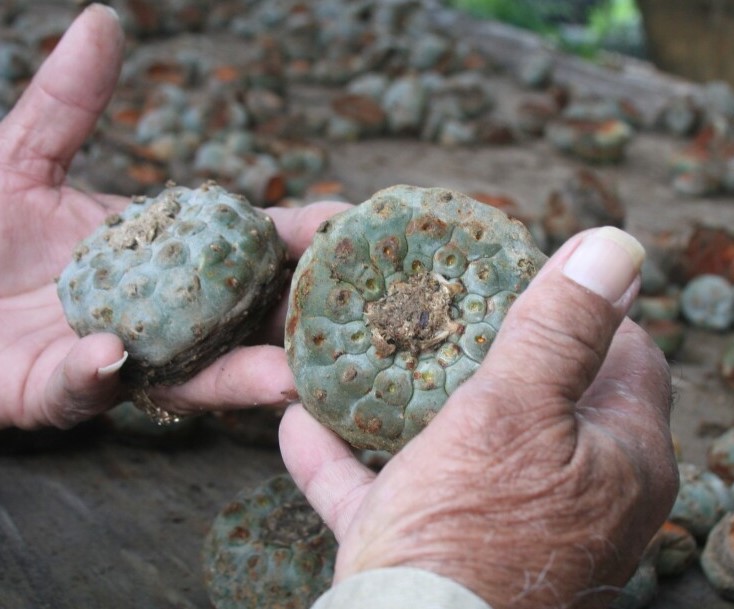
Peyote is a classic psychedelic drug, along with psilocybin (the active component in magic mushrooms) and lysergic acid diethylamide (LSD). Although peyote has not been studied as extensively as its counterparts, it may have comparable advantages.
According to a 2013 study published in PLoS One, the use of psychedelics (including peyote) “did not demonstrate any significant relationships” to an increased rate of mental health problems. In fact, according to the research, psychedelic usage was linked with a “lower incidence of mental health issues.”
According to some studies, peyote might improve creativity and help users solve difficulties. It also appears to be quite safe, with no apparent long-term effects. Users, on the other hand, should still exercise caution.
Psychedelics have the ability to elicit strong emotional states. As a result, someone taking psychedelics while in a bad mood may have a horrible trip. While these consequences are typically short-term, they can be quite harmful for persons who have prior mental health concerns.
Peyote can raise blood pressure, so those who have high hypertension or a heart condition should avoid it. It can also induce birth defects in fetuses, making it hazardous for pregnant or nursing women.
Before taking peyote, individuals who are already taking prescription or over-the-counter medicines should talk to their doctor about it.
Summary: Peyote Use, Effects, & Medical Implications
Peyote and other psychedelics might have a significant impact on how people experience their world.
Users claim that dry hits worsen their day-to-day lives and damp joints can bring about feelings of melancholy, detachment, or hallucinations. They may also bring about feelings of intimacy and emotional connectedness.
Peyote has become increasingly well-known in society at large and has been depicted in popular music and film.
Peyote has grown in popularity among the general public and has been portrayed in music and film. People, on the other hand, have used it for millennia to achieve spiritual or mystical states of mind.
Peyote is a Schedule I drug and, like other psychedelics, it is highly illegal to use and distribute. Peyote is lawful for religious purposes connected with the Native American Church, as the law now permits its usage in such rituals.


